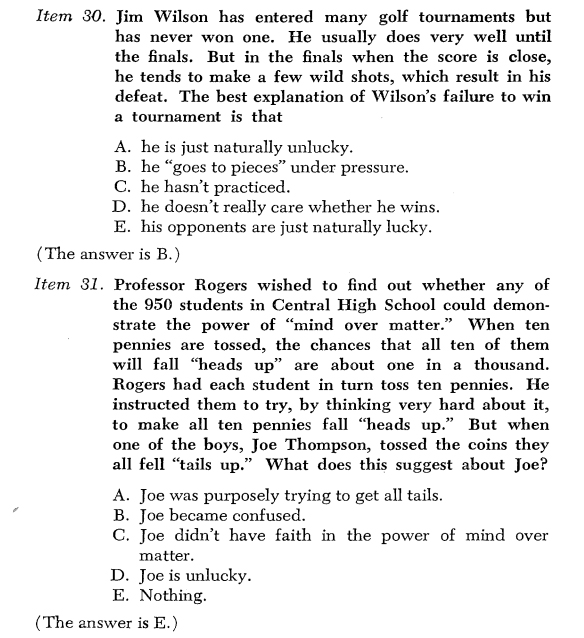Around the time that Sputnik, the first Soviet satellite, sent the U.S. into a panic in 1960, the country began testing the aptitude of 440,000 students for the first time, with the results being sent to high school guidance counselors.
The data was invaluable; the so-called “Project Talent” showed students’ socioeconomic background and the occupation and educational level of his or her parents had more impact on student educational performance than any school characteristics, that the possibilities for a college education depended more on income than academics, and that students who took leadership roles and participated in extracurricular activities in high school generally developed skills that enabled them to earn higher wages.

Over the years, the followup surveys with the students proved that soldiers who saw active combat duty were disproportionately from disadvantaged backgrounds and that PTSD was related to war experience and not any pre-war experience or background.
By the 1970s, it revealed the troubling signs of wage inequity based on gender as well as race and socioeconomic disparities.
Not long after, the survey went mostly dormant until someone had the idea that Baby Boomers could leave a lasting legacy to the future: how to avoid Alzheimer’s.
Last week, questionnaires were mailed to the participants to assess their cognitive functions and a history of their lives to try to make connections with what in their past might have influenced their memory now, Project Talent says.
We are particularly interested in hearing from those who identified in 1960 as belonging to a racial or ethnic minority. Racial minorities who experienced socioeconomic adversity early in life are more likely than their non-minority peers to experience impaired cognitive function and cardiovascular disease as they age. We want to know why this is. We’ll also dig deeper into understanding the longterm impact of attending segregated schools. These findings can have significant implications for today’s education policy as segregation in schools continues to rise. We look forward to hearing from all our participants of color!
Participants who identified as a twin, triplet, or other multiple in 1960 are also included in PTAS. Project Talent researchers have been studying twins and their siblings since the 1960s. Twins and other multiples are an important source of information because they allow us to understand whether health and cognitive outcomes are the result of genetic, family, school, or environmental factors. PTAS researchers will study twins and siblings to develop a deeper understanding of why higher educational attainment corresponds to a reduced risk of cognitive decline in later life.
Twenty-five Minnesota schools participated in the original survey. When asked today, Project Talent refused to disclose which ones, saying it’s confidential.
This document from 1962 provides a clue, however.

